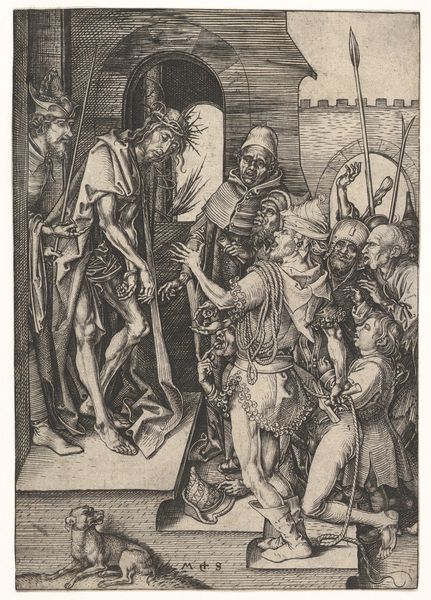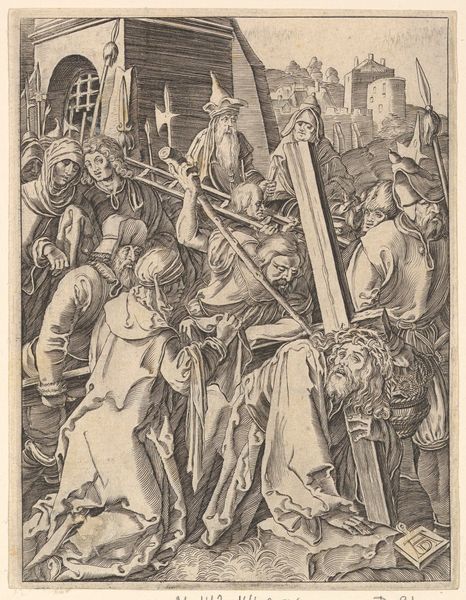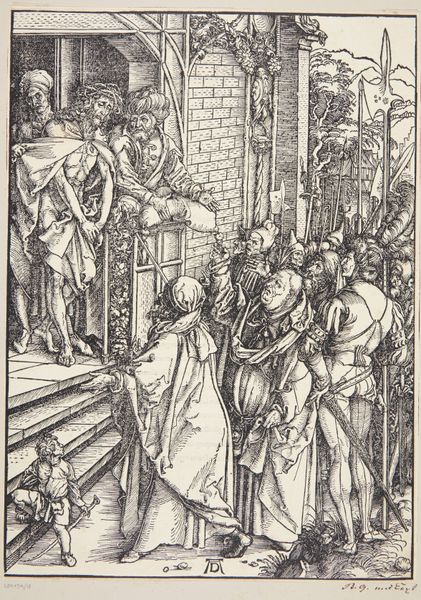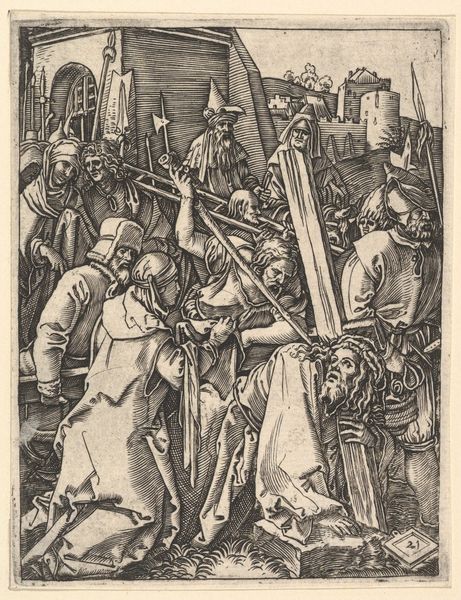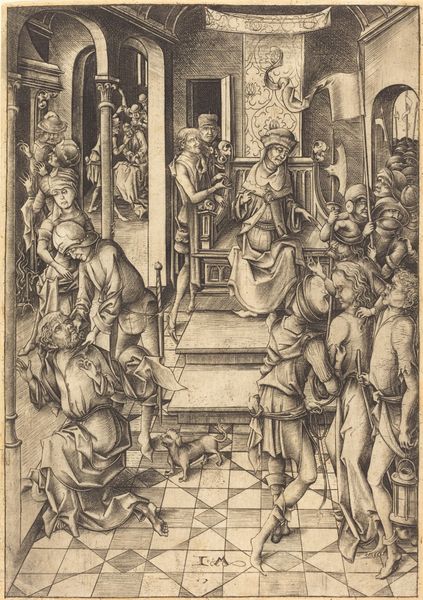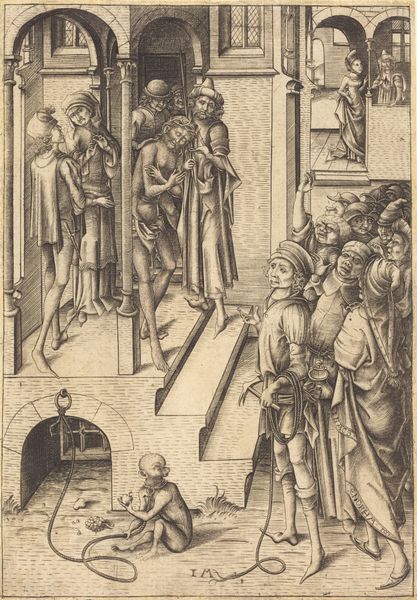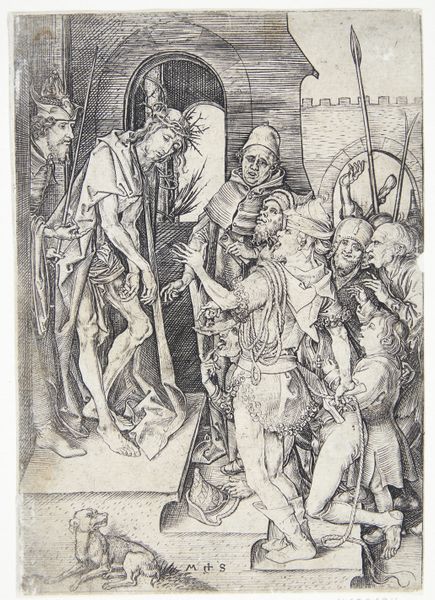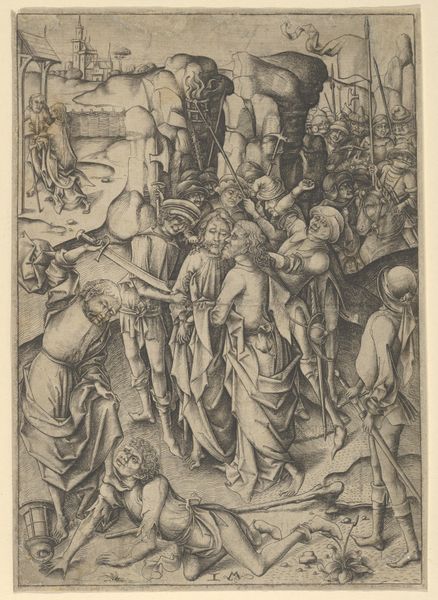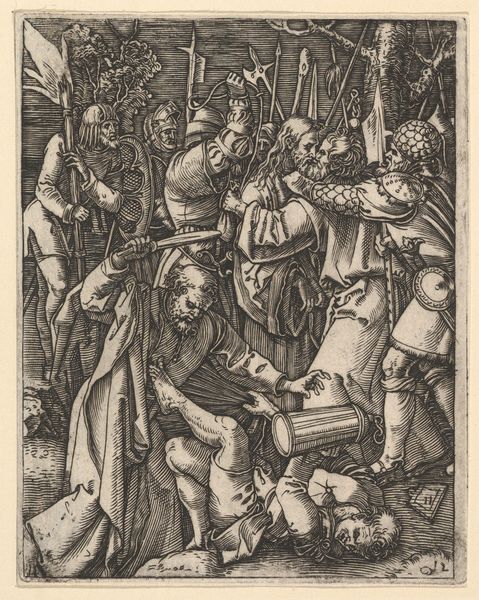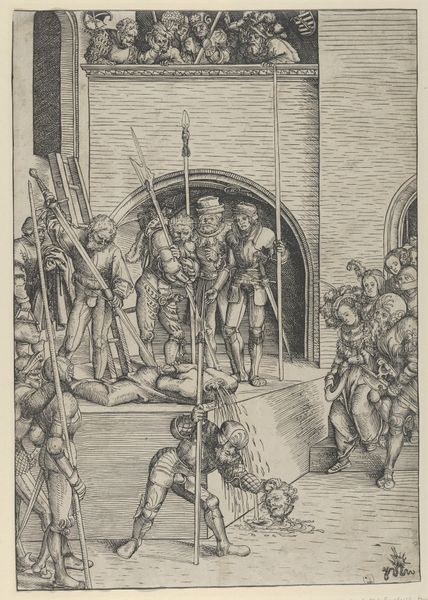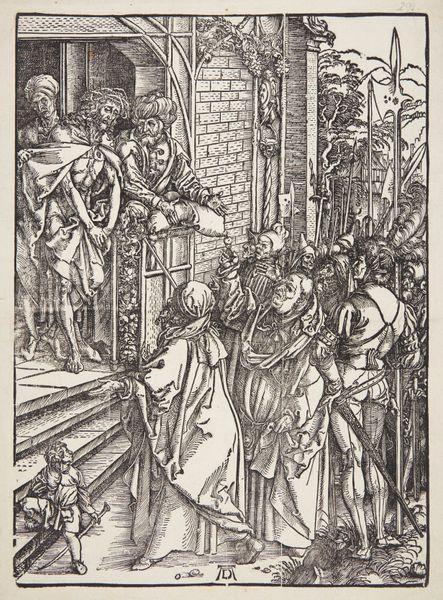
drawing, print, engraving
#
drawing
# print
#
figuration
#
history-painting
#
northern-renaissance
#
engraving
Dimensions: sheet: 7 1/2 x 5 3/8 in. (19.1 x 13.7 cm)
Copyright: Public Domain
Albrecht Durer made this print of the "Ecce Homo" scene, probably around 1510, using a technique of engraving on a metal plate. Durer was working in Germany at a time when new technologies of printmaking allowed artists to circulate images widely. Here, he depicts the biblical scene of Pontius Pilate presenting Christ to the crowd, but Durer sets it in a Northern European city, blurring the boundaries between the past and the present. The print demonstrates the ways that artists of this period infused religious subject matter with contemporary political meaning. One can research the theological debates of the time and the social history of Nuremberg, where Durer worked, to better understand how images like this participated in public discussions about faith and authority. The task of the art historian is to delve into these contexts to interpret the significance of works of art within their specific historical moments.
Comments
No comments
Be the first to comment and join the conversation on the ultimate creative platform.


